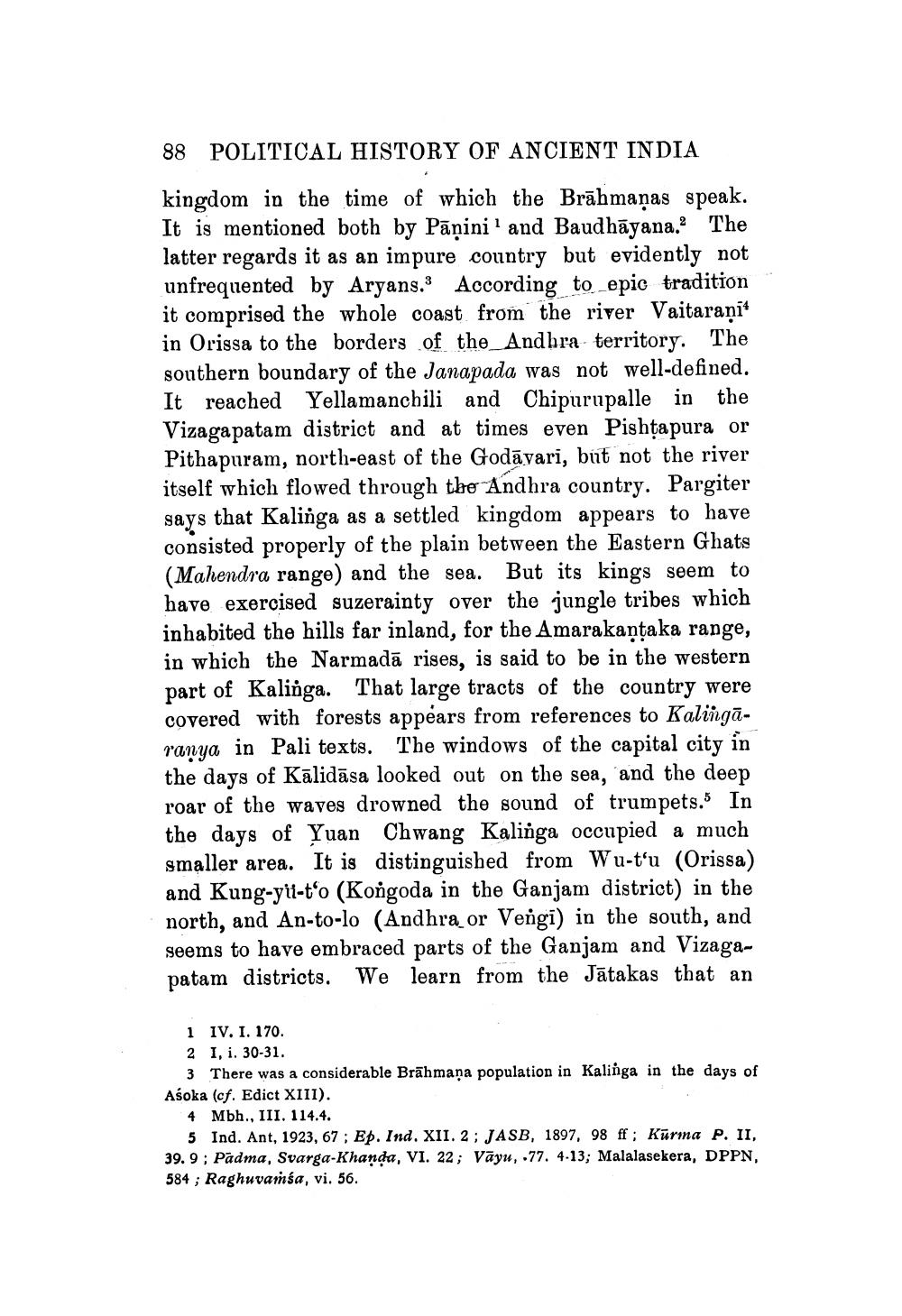________________
88 POLITICAL HISTORY OF ANCIENT INDIA kingdom in the time of which the Brāhmanas speak. It is mentioned both by Pāṇini' and Baudhāyana. The latter regards it as an impure country but evidently not unfrequented by Aryans. According to epic tradition it comprised the whole coast from the river Vaitaraņi* in Orissa to the borders of the_Andhra territory. The southern boundary of the Janapada was not well-defined. It reached Yellamanchili and Chipurupalle in the Vizagapatam district and at times even Pishțapura or Pithapuram, north-east of the Godāyari, but not the river itself which flowed through the Andhra country. Pargiter says that Kalinga as a settled kingdom appears to have consisted properly of the plain between the Eastern Ghats (Mahendra range) and the sea. But its kings seem to have exercised suzerainty over the jungle tribes which inhabited the hills far inland, for the Amarakantaka range, in which the Narmadā rises, is said to be in the western part of Kalinga. That large tracts of the country were covered with forests appears from references to Kalingaranya in Pali texts. The windows of the capital city in the days of Kālidāsa looked out on the sea, and the deep roar of the waves drowned the sound of trumpets. In the days of Yuan Chwang Kalinga occupied a much smaller area. It is distinguished from Wu-t'u (Orissa) and Kung-yii-t'o (Kongoda in the Ganjam district) in the north, and An-to-lo (Andhra or Vergi) in the south, and seems to have embraced parts of the Ganjam and Vizagapatam districts. We learn from the Jātakas that an
1 IV. I. 170. 2 I, i. 30-31.
3 There was a considerable Brāhmaṇa population in Kalinga in the days of Asoka (cf. Edict XIII).
4 Mbh., III. 114.4.
5 Ind. Ant, 1923, 67; Ep. Ind. XII. 2; JASB, 1897, 98 ff; Kūrma P. II, 39. 9 ; Padma, Svarga-Khanda, VI. 22; Vāyu, -77. 4.13; Malalasekera, DPPN, 584 ; Raghuvamśa, vi. 56.




